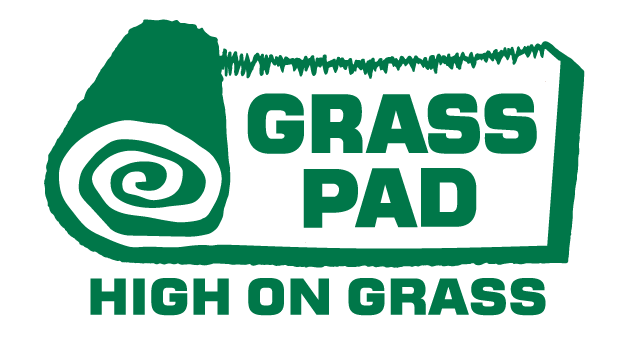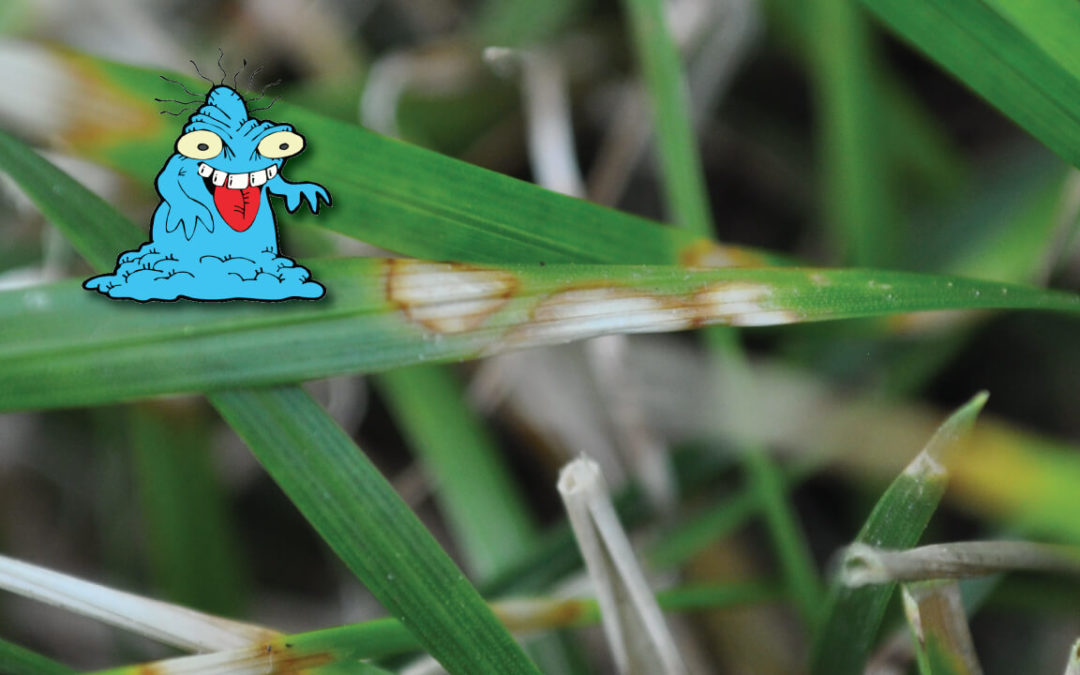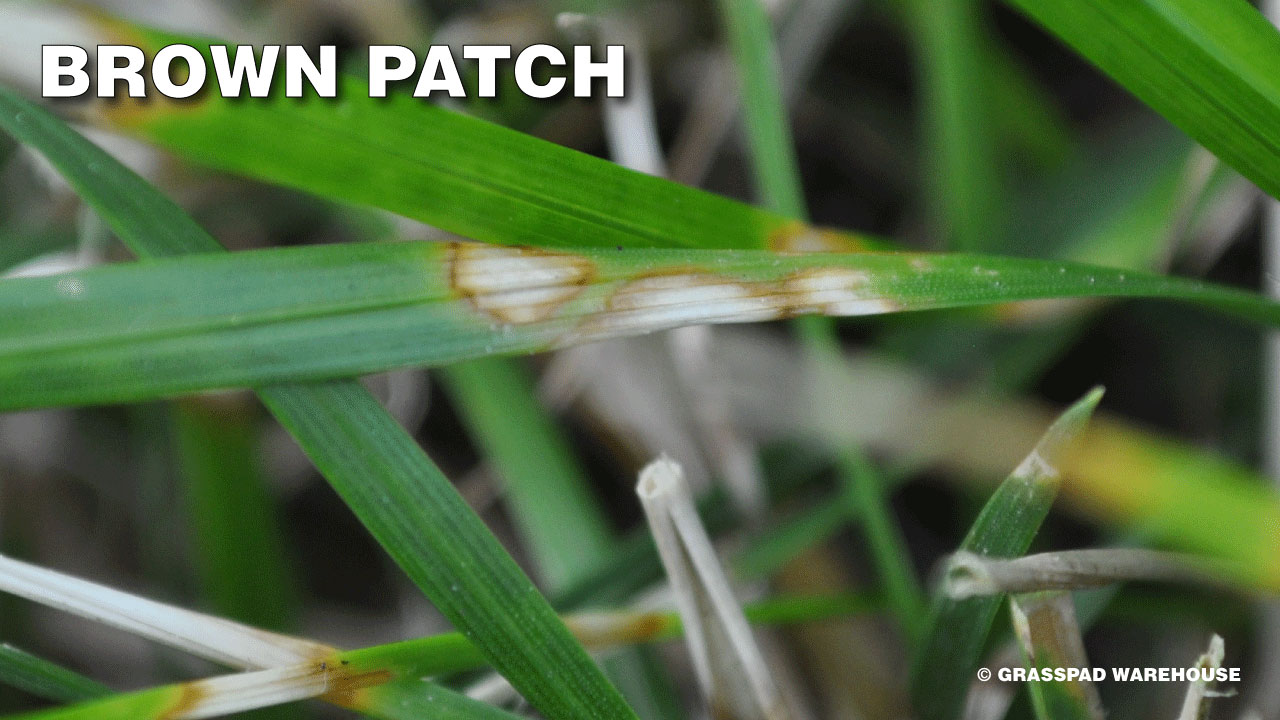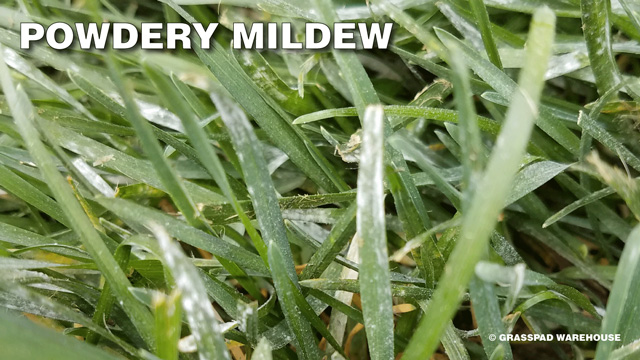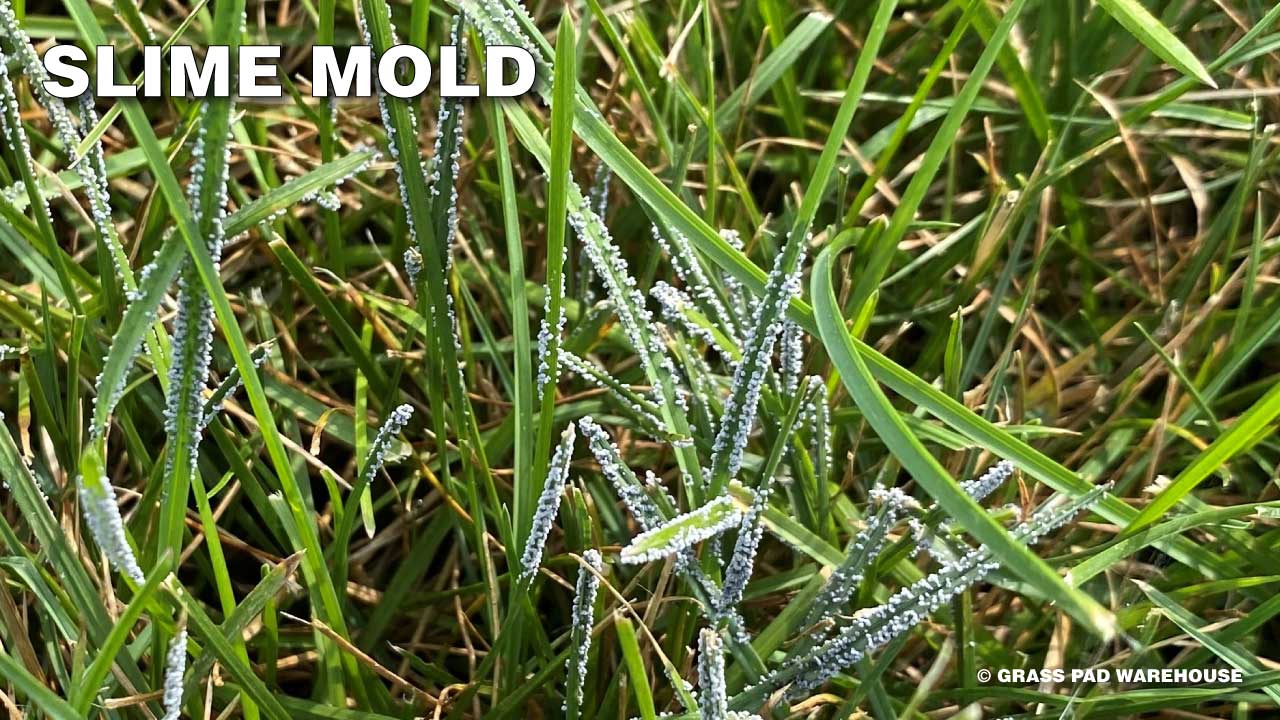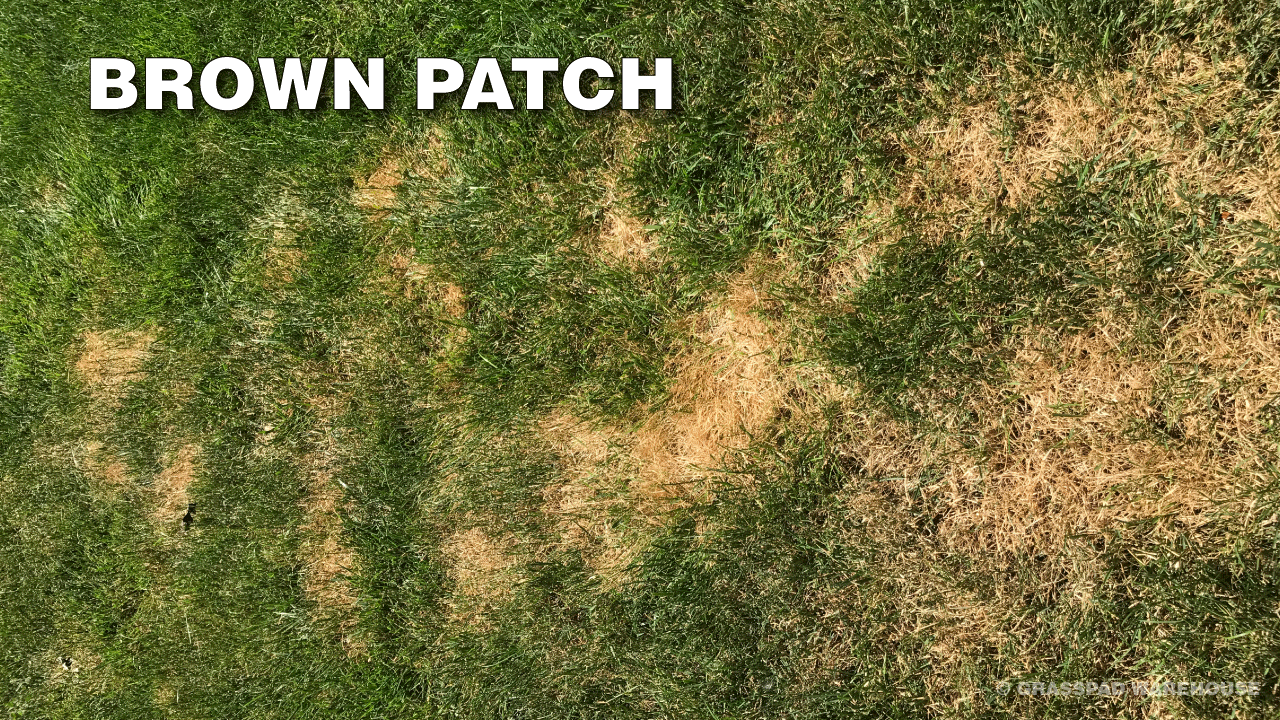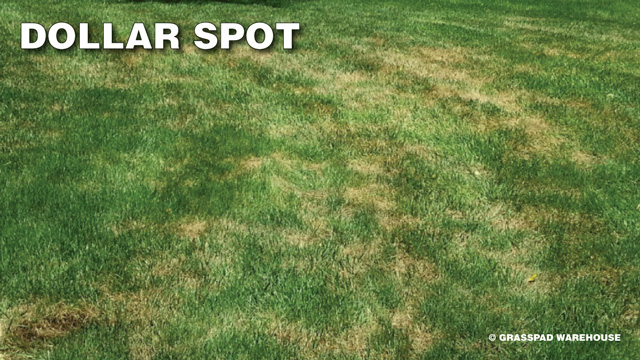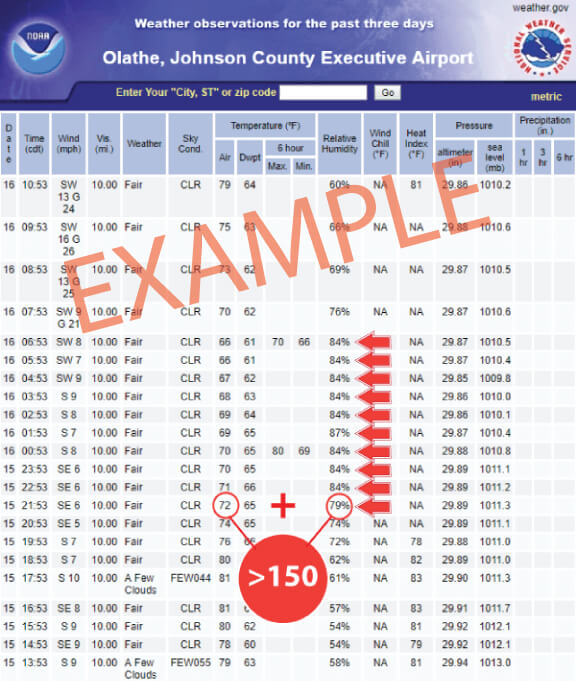Hot, humid temperatures bring disease and fungus to your yard. Managing disease in turf starts early in spring – lawn spots are a lot easier to prevent than control. By applying granular Fungus Fighter, we can protect the lawn before pathogens get into the plant and wreak havoc. Shaded areas are of particular concern. Restricted air movement and humid conditions will stimulate turf disease. Grass Pad’s Fungus Fighter allows a healthy lawn to outgrow many of the diseases that show up.
What is Fungus Fighter?
Uncle’s granular Fungus Fighter provides control of the most common diseases in cool and warm season grasses, including but not limited to brown patch, powdery mildew, pythium, summer patch, dollar spot, anthracnose, red thread, rust, snow mold, large patch in zoysia.
The Fungus Fighter Advantage
Fungus Fighter is a combination of two broad-spectrum curative and preventative fungicides. They provide long-lasting disease control specifically engineered to protect against many of the most destructive turf diseases. Each Fungus Fighter application provides systemic preventive and curative control for turf diseases. Treating lawns with Fungus Fighter is an excellent foundation for a disease resistance management strategy. Root systemic activity allows grass plants to take up Fungus Fighter and provide protection against invading fungi from within the plant.
How Do I Apply Fungus Fighter?
Fungus Fighter is a granular application. No hoses or sprayers are required; just use your broadcast spreader. Each bag of Fungus Fighter will cover approximately 7,500 to 15,000 square feet, dependent upon application intervals. Fungus Fighter should be watered within 24-48 hours after application.
What to expect from Fungus Fighter?
Lawn diseases appear when the grass is suffering from heat and drought, making recovery slower. Have reasonable expectations after any curative application. Fungicides are used as disease suppressors. When applied as directed, Fungus Fighter will suppress the spread of the most common turf diseases. However, when used as a curative control, Fungus Fighter will not change brown or yellow spots to green. Regular lawn maintenance, re-applications of Fungus Fighter, and routine fertilization will be required to rebuild healthy grass to grow out of the disease. Spot repairs or heavy overseeding may be necessary.
What Does Fungus Look Like?
There are several different types of fungus that can appear in your lawn depending on your conditions and the type of grass you have. There are a couple of the more common varieties below. If you’re concerned about whether or not you have fungus in the yard, bring in a sample to our lawn experts and we can help identify the problem!
Turf disease in Bluegrass Lawns
Bluegrass diseases show up in the form of slime or dust that wipes off or even a patch that seems to die overnight. Apply Fungus Fighter in Late April to Early May when bluegrass is looking its best. Maintain continuous control by applying Fungus Fighter at 14-28 day intervals while conditions are favorable for disease.
Uncle’s Tip: Mow bluegrass shorter in the spring and be vigilant in the areas under trees or on the north side that seem to hold the heavy dew longer in the morning. Mow the lawn shorter while it is cool, and the rain is plentiful. In June, raise the mowing height and don’t let the lawn dry out too much before starting the summer watering schedule. Should large areas die in the summer, add Stadium Special perennial ryegrass to your favorite blend in the fall for a quick recovery.
Turf Disease in Fescue Lawns
Fescue diseases can be a little more predictable and easily forecast by the temperature and humidity when added together (see example) are higher than 150. Applying granular Fungus Fighter at 14-28 day intervals from mid-May through mid-August, when conditions are most favorable for disease, should keep you ahead of the game.
Dampening Off in Newly Seeded Areas
Most common during seeding season, Dampening Off will show up when warm overnight temperatures create the perfect scenario for fungus to pop up. A form of pythium blight, Dampening Off, can appear overnight in newly seeded areas when overnight temperatures reach the upper 70’s in late spring or late fall. Dampening Off appears in the morning as patches of cotton or spider webs in the dew. They feel slimy or oily when touched and smell like composting grass clippings.
For large areas, Fungus Fighter is available to protect your investment; however, for small areas, Dampening Off will stop as nighttime temperatures continue to drop. An alternate course of action would be letting that area dry out by reducing your watering and avoiding watering right before nightfall. Water should be available for the new plants during the day with warm sunshine and the soil less saturated at night. Give the spot a couple of weeks for the fresh grass to fill in; if it doesn’t fill in like you want, add more seed.
Turf Disease in Zoysia Lawns
Large patch disease in zoysia can pop up anytime during the growing season when cool, wet conditions prevail. It’s very common to see in early spring and late fall as the zoysia is going into or coming out of winter dormancy. Large patch can also appear in shaded areas and wet areas in mid-summer. Large patch can be a real problem for several years in a row and can show up in the same spots in spring and fall. In the fall, circular patches start to discolor and turn bright orange. Look for pinpoints of reddish-brown to black lesions at the base of the leaf. You will need to dig into the thatch layer to see these lesions. If there is a history of large patch, a preventative application of Fungus Fighter in late September to early October is recommended. An application of Fungus Fighter in spring will protect the turf from a fall infection, prevent patches from getting larger, and also control disease development in spring.
Managing Your Turf to Reduce Disease
Managing humidity at the ground level is important. Avoid watering the lawn until it needs it. When you have a choice only water early in the day, so the grass is not wet overnight. Mowing cool season grasses lower in May and early June will be critical in reducing the amount of dew on the grass. Decrease the effect of turf disease by introducing genetic diversity into your lawn each fall by overseeding with improved disease-resistant varieties of Grass Pad grass seed.
What is Resistance Management?
Certain fungal pathogens are known to develop resistance to products with the same mode of action when used repeatedly. Because resistance development cannot be predicted, the use of this product should conform to resistance management strategies established for turf. Such strategies may include rotation with products having different modes of action or limiting the total number of applications per season. For more information on developing a resistance management strategy talk to the turf experts at your nearest Grass Pad location.
More Related Articles to Turf Diseases
Seasonal Height of Cut
- Best practices for mowing height. Learn more at this link.
Should You Mow Wet Grass
- What you should know before mowing wet grass. Learn more at this link.
Mushrooms in the Lawn?
- Mushrooms feed on organic matter in the soil. Learn more at this link.
Disease Management for Deep Shade
- Five idiot-proof tips to improving growing conditions under large shade trees. Learn more at this link.
